Insects are a class of animals characterized by their exoskeletons and six legs. They make up half of all known life forms on Earth and their million different species also consume a million different things. Some, like butterflies and bees, eat pollen and nectar from flowers. Others, like dragonflies, catch prey and eat only meat, often other insects like ants, flies or beetles, which have their own unique diets.
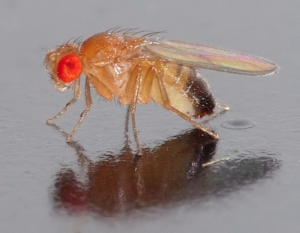
Ants, for example, collect leaves and other debris and then harvest the fungus that grows on them. Flies typically eat detritus such as rotting meat or animal feces. Most beetles, on the other hand, are herbivorous and eat leaves, flowers and fruits. Termites eat cellulose, or fibrous plant matter, which can be found in wood. As you can see, the world of insects is a huge and varied one, with no set diet even among related species!
What do Wasps Eat?
Table of Contents
Wasps are insects related to bees, except that they don’t make honey and can sting more than once. They also tend to be more aggressive, so most people spend more time avoiding them than trying to figure out what wasps eat. In fact, they are powerful predators that can hunt animals much larger than themselves thanks to a paralyzing venom in their stingers. Adult wasps do not eat their prey, however. Their unfortunate victims are instead destined for wasp larvae, which will usually only eat live food.
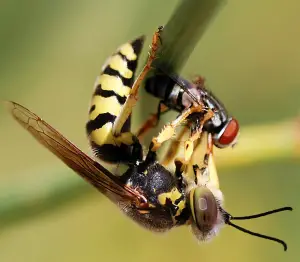
Adult wasps have tiny, narrow waists which don’t allow them to eat solid foods. This means they can only eat liquids, honeydew being a particular favorite. Wasps have also been known to consume the blood of caterpillars and small animals. Other wasps specialize in attacking colonies of honeybees, killing the workers and then stealing their honey. Wasp larvae produce a highly nutritious liquid which the adult wasps also eat.
What do Cockroaches Eat?
Cockroaches are a type of insect that most people think of as dirty and gross. They are, however, actually clean and intelligent bugs. They get their nasty reputation from their diet of mostly rotting substances, but they are an essential part of many ecosystems, where they clean up things that could otherwise spread disease. Roaches prefer starchy, decomposing foods, but in truth they can eat almost anything.
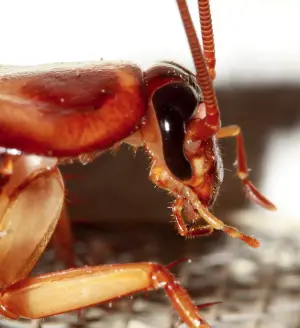
Fallen leaves, sugary items like rotten fruits and old meats would be their food of choice in the wild, but many cockroaches have adapted to life close to people. In a human home, cockroaches have been found eating paper, dead skin cells, glue, hair, any food that’s been left out, leather and even wood! Because of the abundance of things you might not even consider as a food source, it’s no wonder so many cockroaches take up residence in apartments, restaurants and houses.
What do flies eat?
Flies are winged insects that you may have seen buzzing around your own home. Flies have no teeth, so the only food they can eat is in a liquid form. This means they get most of their nutrition from plant and animal waste products. Some flies, like the fruit fly, eat and lay their eggs in rotting fruits and vegetables, while others suck the sap from trees using their proboscis, which is a tongue shaped like a straw.
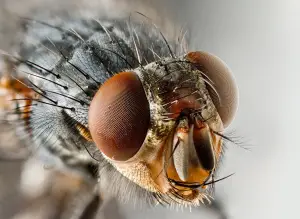 Some flies eat less savory items, such as rotting meat or animal feces. They then lay their eggs in the waste and their baby flies, called maggots, finish off the meal. This may seem gross, but flies and maggots are essential for cleaning up nature and preventing the spread of disease. Some doctors even use maggots to clean out the infected wounds of patients, as the little bugs only eat dead flesh and leave everything else untouched.
Some flies eat less savory items, such as rotting meat or animal feces. They then lay their eggs in the waste and their baby flies, called maggots, finish off the meal. This may seem gross, but flies and maggots are essential for cleaning up nature and preventing the spread of disease. Some doctors even use maggots to clean out the infected wounds of patients, as the little bugs only eat dead flesh and leave everything else untouched.
What do beetles eat?
Beetles are a widespread family and account for a full 25% of all known animal species. With all those types of beetles, it’s no surprise that they eat many different things, as well. Some beetles are predatory, but most are either omnivorous or herbivorous, relying on decaying plant matter for their daily diet. Many are also adapted to eat just one type of food.
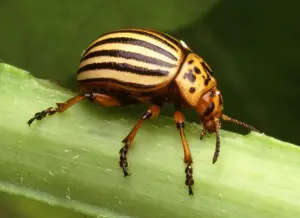 The cotton boll weevil, for example, is a major pest for farmers thanks to its diet of cotton. The dung beetle collects and eats the droppings of animals, while leaf beetles, as their name implies, consume the leaves and flowers of plants.
The cotton boll weevil, for example, is a major pest for farmers thanks to its diet of cotton. The dung beetle collects and eats the droppings of animals, while leaf beetles, as their name implies, consume the leaves and flowers of plants.
Carnivorous beetles are more general hunters. They eat snails, worms, insects, spiders and pill bugs, as well as the larvae of other bugs. Ground beetles are active predators and the tiger beetle is one of the fastest creatures on the planet!
What do bees eat?
Bees are a familiar sight in spring and summer, bustling to and from flowers and collecting pollen on their legs. Bees live in complex colonies called hives, and every day thousands of worker bees head out to find, gather and process pollen and nectar.
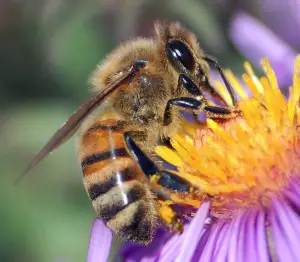 Honey bees make and eat honey along with another compound called ‘bee bread.’ Honey is made from nectar, which is stored in wax honeycombs built by the bees themselves. The bees produce special enzymes that help the nectar thicken and turn into honey. Honey is very long-lasting and if stored properly can stay good for more than 2000 years! Bee bread is made by mixing pollen with the nectar, and then fed to bee larvae.
Honey bees make and eat honey along with another compound called ‘bee bread.’ Honey is made from nectar, which is stored in wax honeycombs built by the bees themselves. The bees produce special enzymes that help the nectar thicken and turn into honey. Honey is very long-lasting and if stored properly can stay good for more than 2000 years! Bee bread is made by mixing pollen with the nectar, and then fed to bee larvae.
Baby bees are first fed a diet of a substance known as royal jelly, which young worker bees can excrete. If a larva is fed nothing but royal jelly, she will grow into a queen bee. Most larvae, however, graduate to bee bread and honey before becoming adults.
What do cicadas eat?
Cicadas are insects that invade various parts of North America every 13 to 17 years. Baby cicadas, or nymphs, live underground for over a decade by digging down to tree roots and drinking the sap from them. The nymphs have a long, straw-like mouth called a proboscis, which they use to poke into the veins of trees, known as xylem.
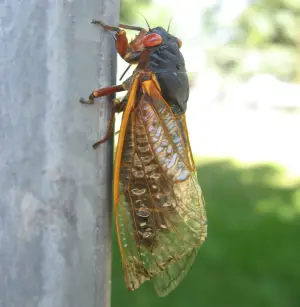 Baby cicadas commonly feed from deciduous trees such as dogwood, oak, ash, maple and fruit trees such as apple, pear and peach.
Baby cicadas commonly feed from deciduous trees such as dogwood, oak, ash, maple and fruit trees such as apple, pear and peach.
Once the cicadas are old enough, they emerge from the ground and transform into their winged adult form. Mature cicadas only live for a few months, living in the trees in large, buzzing colonies. They mostly survive off of their own energy reserves stored up as a nymph, but they also drink the sap of trees. Eventually, female cicadas lay their eggs in the same trees they lived on, guaranteeing a meal for their young once they hatch.
What do Japanese beetles eat?
The Japanese beetle is largely considered a pets and is on the list of invasive species here in the United States. While beautiful the beetle can unleash havoc on many ornamental plants. Japanese beetles will eat most plants but tend to prefer plants you actually care about. The list of plants the Japanese beetle will eat in North American numbers over 200 different species.
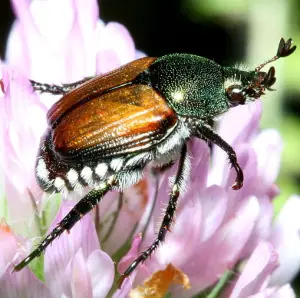
The tail tell mark of a Japanese beetle infestation is in how the Japanese Beetle will eat on a leaf. It is know for skeletonizing leaves. The beetle eats all the soft areas on a leaf and leaves behind the veins.
Being that the beetle eats so many different plant in the United states the list is very long. Some of its favorites are: Rose bushes, Grapes, Crape Myrtles, Red maple, Silver maple, Boxwood, Flowering dogwood, Euonymus, White ash, Green ash, Holly, Tuliptree, Magnolia, Red Mulberry, White poplar, Common lilac.
What do Centipedes Eat?
Centipedes are long, narrow bugs famous for their many legs, ranging from as few as 32 to almost 400. Centipedes are carnivores that hunt by using their long antennae to find prey and then injecting it with a venom.
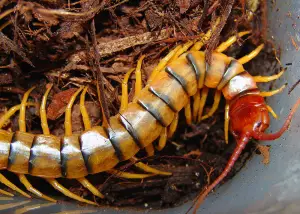
Most centipedes eat invertebrates such as worms, spiders, crickets, beetles, cockroaches, flies, grasshoppers, ants, potato bugs and even other centipedes. Some centipede species eat plants, especially decaying vegetation like fallen leaves and tree bark, if they can’t find anything better like insects. Other centipedes are large enough to attack animals like mice, frogs, lizards and even flying creatures like birds and bats! Centipedes can capture such large prey because of their venom, but they are not deadly to humans. A centipede bite will swell up and hurt much like a bee sting if you are unfortunate enough to be bitten.
What do Lightning Bugs eat?
Lightning bugs, or fireflies, are insects famous for their ability to light up their abdomens in a dazzling display. They spend most of their lives in a larval stage, but transform into winged adults during the summer months in order to find a mate.
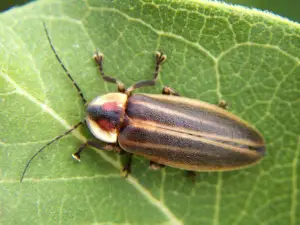
When they are larvae, lightning bugs are predatory omnivores that eat creatures like worms, snails and slugs. They also eat dead animals like mice or even larger mammals, and dead organic material like rotting wood. The larvae follow slime trails left behind by slugs and snails and inject them with venom to paralyze their victims.
Adult lightning bugs are mostly focused on reproducing and do not live very long, so they eat less than their larval forms. It’s thought that they do sometimes eat plant nectar and pollen, collecting it from summer flowers like daisies and rhododendrons.
